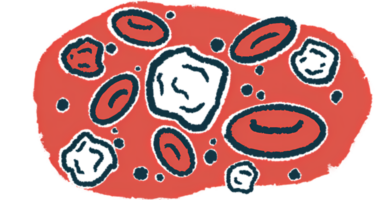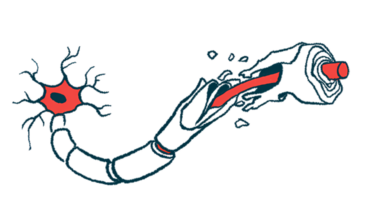Fibroblast therapy helps restore myelin in 2 mouse models of MS
CYMS101 demonstrated benefits within 7 weeks after infusion

Fibrobiologics’ investigational cell therapy CYMS101 can significantly increase myelin production and promote myelin repair in a mouse model of multiple sclerosis (MS), the company has announced.
The experimental therapy, which is made of connective tissue cells called fibroblasts, demonstrated benefits within seven weeks after both single and multiple infusions into the bloodstream.
This is the second MS animal model in which CYMS101 has increased the production of myelin, reinforcing its potential as a treatment for MS.
“Confirming remyelination in a second validated animal model is an important step in our research and development efforts,” Pete O’Heeron, founder and CEO of Fibrobiologics, said in a company press release.
‘Fibroblasts can support the regeneration of myelin sheath’
“This confirmation by our talented team of researchers demonstrates that fibroblasts can support the regeneration of myelin sheath, marking a potentially significant step in the utilization of a cell-based therapeutic in regenerative medicine,” added Hamid Khoja, PhD, chief scientific officer of Fibrobiologics.
The company has already completed a Phase 1 trial (NCT05080270) in five MS patients, where CYMS101 was found to be safe and showed early signs of efficacy. Fibrobiologics is now investigating how the therapy affects the number of myelin-producing cells called oligodendrocytes, with plans to advance it to a Phase 1/2 trial in the U.S.
According to its 2024 annual report, released last month, the company is planning to file for regulatory clearance of the Phase 1/2 study “as funding allows.” It is also looking for a partner to collaborate in CYMS101’s development, “either before initiating the Phase 1/2 study, or after its completion, if successful, and prior to commencing a potential Phase 3 clinical trial.”
Fibroblasts, which manufacture the fibrous proteins that form connective tissue, are one of the most abundant cell types in the body. They are involved in wound healing and are one of the two cell types that can regenerate bodily tissues. The other are stem cells.
Several groups are developing stem cell therapies for MS, or more specifically, therapies containing mesenchymal stem cells, which are more scarce and more difficult to grow in a lab for therapeutic purposes.
Fibroblasts pose advantages over stem cells at each step in the process, according to Fibrobiologics. They can be obtained in large numbers from a single skin punch, are more robust, and require less care than stem cells, making them cheaper to manufacture and maintain.
Cell-based therapy made of fibroblasts collected from skin of healthy donor
CYMS101 is a cell-based therapy made of tolerogenic human dermal fibroblasts, or fibroblasts collected from the skin of a healthy donor that do not trigger immune responses in the recipient. It is being developed to help regenerate the lost myelin in people with MS, which may ease symptoms and even restore lost functions.
Prior work from the company showed CYMS101 can facilitate remyelination. In mice with experimental autoimmune encephalitis (EAE), a model that emulates MS immune responses and symptoms, the cell-based therapy increased the number of oligodendrocytes and the production of myelin, while also reducing signs of inflammation.
These effects were overall better than those seen with mesenchymal stem cells, which prompted the start of a Phase 1 clinical trial involving four relapsing-remitting MS patients and one secondary progressive MS patient. Patients received a single infusion of CYMS101 and were monitored for 16 weeks, or about four months.
The therapy was deemed safe, with no side effects being reported during the study, meeting the trial’s main goal. It also showed promising efficacy signs, with patients experiencing clinically significant improvements in cognitive function and dexterity tests, and no changes in walking ability or disability levels.
The latest experiments have now examined the impact of CYMS101 in mice treated with cuprizone, a toxin that causes MS-like damage to myelin. As no mouse model can fully capture the nuances of MS, confirming the therapy’s efficacy in both EAE and cuprizone models strengthens the hypothesis that fibroblast therapies would be effective in humans with the disease.
According to O’Heeron, the findings offer “fresh hope for patients with demyelinating diseases, including multiple sclerosis. These findings advance our mission to develop transformative fibroblast-based therapies that address the root causes of chronic disease, not just their symptoms.”








